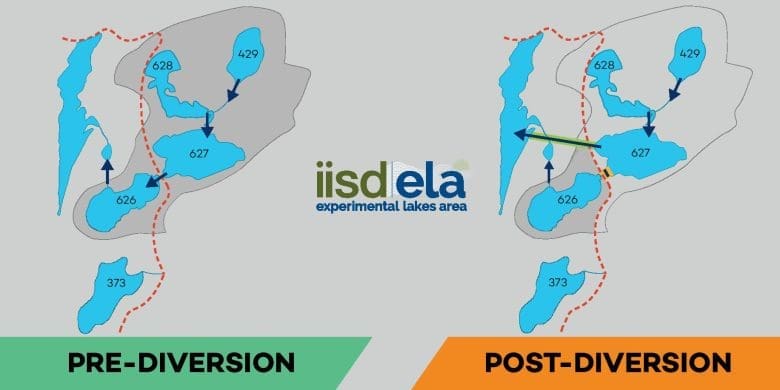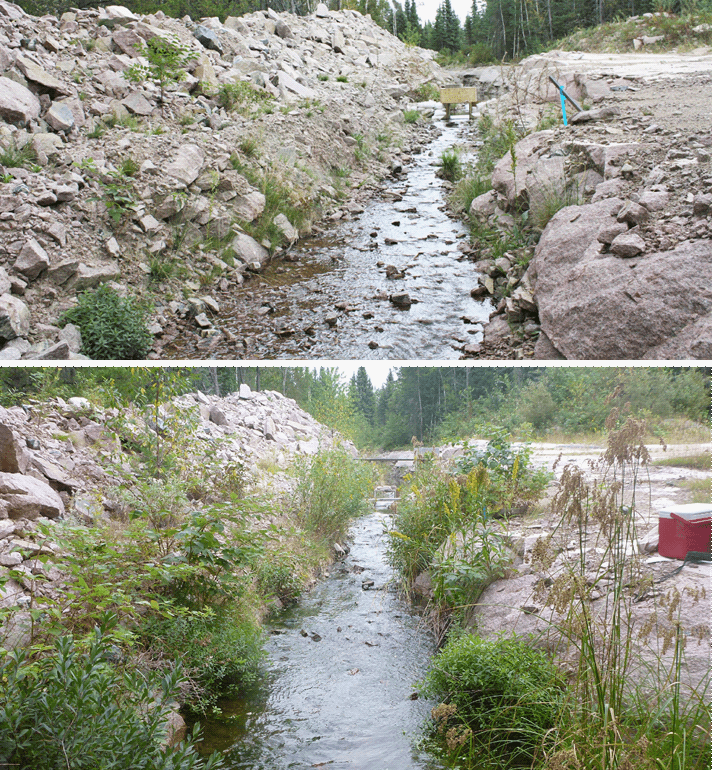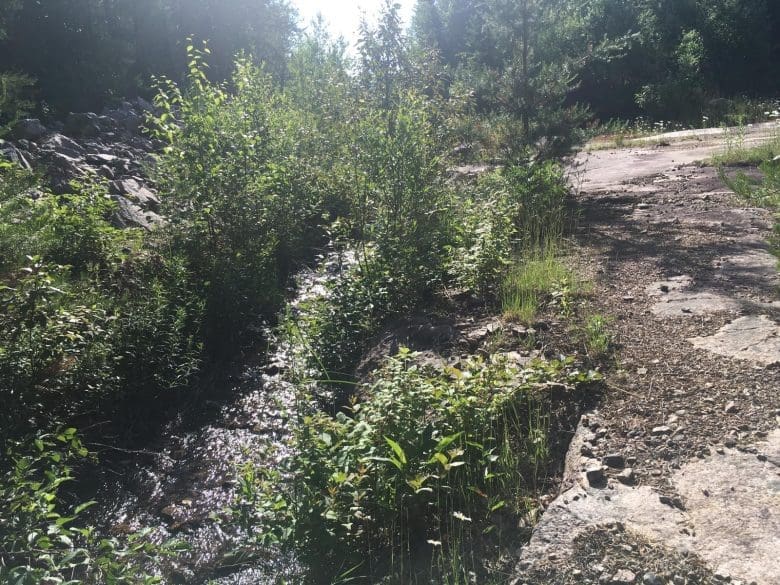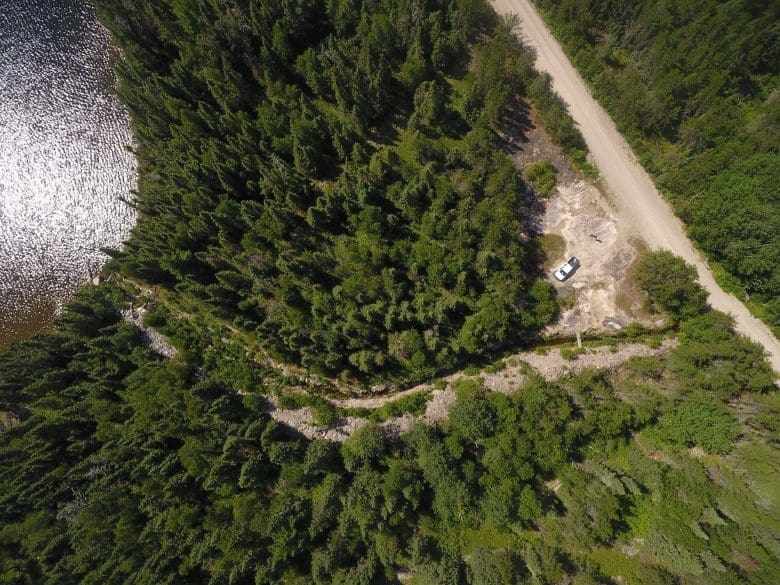Research August 31, 2020
This Is What Happens When You Create a Brand-New Stream
By Hannah Anderson
The need to move water is a common concern for industrial activities worldwide. Water transfers happen frequently and often use human-made waterways (called diversion channels) to redirect water. These practices can increase the vulnerability of aquatic life by shifting or removing livable habitat.
In Canada, artificial waterways can be used to mitigate the loss of aquatic habitat during watershed-altering projects (like mining). Even still, we need long-term research on how well “like-for-like” replacements compensate for habitat loss within a watershed.
Our Water Diversion Project was designed to study the impacts of reduced precipitation (due to climate change) on a boreal lake ecosystem. This project also offered scientists a chance to study the progression of a newly-created diversion channel in the Canadian Shield.

As part of the Water Diversion Project, researchers converted a fourth-order lake (a lake with three upstream lakes) to a first-order lake (a headwater lake). They did this by building an industry-standard diversion channel to redirect water from the upstream lakes around the study lake. Researchers started collecting background data in 2008, and the diversion channel was opened in November 2010. (Read more from researcher Lee Hrenchuk about her involvement with the project)
Our study of the diversion channel itself involved comparing the ecology of the constructed channel (called “the diversion”) to a nearby natural lake-outlet stream. Researchers compared water movements, bankside flora, and bottom-dwelling macroinvertebrates of both streams.
Using Invertebrates to Study Habitat for … Fish?
Macroinvertebrates are animals without a backbone that you can see with your naked eye, like leeches or insects.
These critters cycle nutrients and are an important food source in aquatic ecosystems. Because they are sensitive to poor habitat, macroinvertebrates are key indicators of stream quality. They can tell us a lot about how suitable a stream is for other animals, like fish.
This five-year study has given hopeful insight into how human-made channels may help offset fish habitat losses during ecosystem-altering projects.
Here are some of the main findings:
- Researchers looked at the growth of riparian vegetation (the plants that grow where land and stream meet). Throughout the study, the diversion’s riparian vegetation increased from 0% to almost 40% in some areas (2011-2015). Compared to a natural stream, though, the diversion still had less riparian vegetation overall.

- The diversion was built simply, with a relatively uniform stream bed. Researchers found that the diversion’s stream bed changed somewhat but remained relatively simple over time. Taking notes from natural streams, habitat complexity should be part of diversion channel designs (e.g., using pools of calm water and riffles of fast-flowing water in the same channel). This idea is not new, but this research supports the importance of intentional channel design. This practice could increase the diversity of habitats and result in more diverse macroinvertebrate communities.
- As for what macroinvertebrates came to live in the new diversion channel, the number of individuals and diversity (number of species) increased over time. In fact, after only three years, the diversion’s macroinvertebrate community became more like that of a natural stream. Specific organisms found by researchers included non-biting midges, caddisflies, and blackflies. It seems the diversion offered enough food and suitable living conditions to support a variety of macroinvertebrates.
- When considering inputs of food and nutrients, it was found that inputs from other parts of the environment (e.g., the forest) helped determine macroinvertebrate diversity. For example, small particle carbon sources (like dead algae from upstream) can favour invertebrates that filter and eat decomposed matter.
- And finally—can we estimate how long it takes for new channels to form good habitat? Comparisons showed that new, southern boreal lake-outlet channels can resemble natural, productive streams in a short time (years, rather than decades).

You can read the details of the study and what it means for diversion channels and macroinvertebrates in this new paper published in the Canadian Journal of Fisheries and Aquatic Sciences.
If you’d like to talk study details with one of the researchers, feel free to email Lee Hrenchuk (lhrenchuk@iisd-ela.org), with questions.

You know that ground-breaking freshwater research you just read about? Well, that’s actually down to you.
It’s only thanks to our generous donors that the world’s freshwater laboratory—an independent not-for-profit—can continue to do what we do. And that means everything from exploring what happens when cannabis flushes and oil spills into a lake, to how we can reduce mercury in fish and algal blooms in fresh water—all to keep our water clean around the world for generations to come.
We know that these are difficult times, but the knowledge to act on scientific evidence has never been more important. Neither has your support.
If you believe in whole ecosystem science and using it to bring about real change to fresh water around the globe, please support us in any way you are able to.